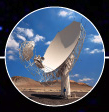A meteor entering the higher layers of the atmosphere changes the surrounding media to a plasma reflecting electromagnetic waves. This phenomenon is well known for radars where the plasma creates a moving target reflecting back the transmitted pulses. This reflection mechanism is also the key for point to point communications where specific wireless systems are designed to use these opportunistic reflectors to open obstructed channels. Most of the meteors vanish during their friction through the atmosphere, and most of the time only dust reaches the ground. For dense or heavier objects, it is of high interest for scientists and astronomers to collect the stone on the ground before it is too contaminated by earth atmosphere. It is also important to know where the object comes from, for a better characterization of the known meteor swarms.
Meteor detection and tracking is the core research work done in the RETRAM group. Conversely to most systems using active radars or passive detection with multiple antennas, the RETRAM project tries to use multiple simple receiving stations and passive radar techniques to detect falling objects and estimating their trajectory in the vicinity of Paris, France. The group works on the design of a low-cost network of sensors and relevant algorithms, using the Internet to interconnect the radar stations and processing systems.
This presentation describes the underlying processing and the architecture of the system, the different illuminators of opportunity used and gives some results for the main showers during 2012 and 2013, showing - when available - the comparison with optical observations.

 PDF version
PDF version
